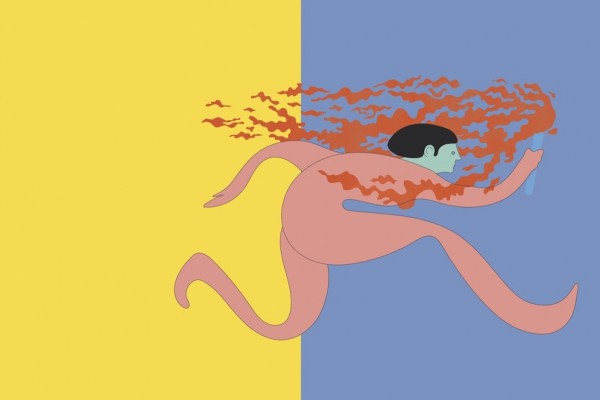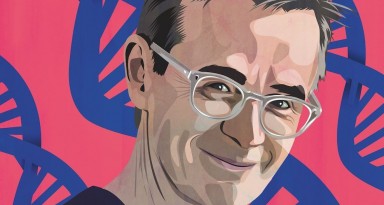The south of England doesn’t get particularly cold in winter, but temperatures do sometimes lurk below freezing for a few days. At those times, an intermittent roaring and rumbling sounds through my house: our gas boiler and central heating pump labouring to keep the rooms warm, and enough hot water in the tank.
If I look through the small window in the boiler’s front panel while it’s roaring, I see flames dance: blue peaks fading to white. That’s as close as daily life brings me to tending a fire. Energy bills aside, my contribution to the business of keeping my family warm consists of adjusting a few dials and arranging an annual-ish service. The boiler does its thing while, beneath the street, metal pipes bring a ceaseless supply of fuel.
Like everything else we burn, the energy in this fuel was first captured from the Sun by living organisms: by plants and the animals that fed upon them, in the case of natural gas, many millions of years ago. To burn such fuel is to exchange old life for new heat and light. And without life, no such exchange can take place.
As the author Gaia Vince explores in her 2020 book Transcendence: How Humans Evolved through Fire, Language, Beauty, and Time, the first billion years of our planet’s existence were “a time before fire... because there was nothing to burn and no oxygen to burn it”. It was only when the earliest life forms began to photosynthesise and release oxygen into the barren planet’s atmosphere – and to reproduce and evolve, bringing into being an energy-rich biosphere – that fire took root on Earth.
Since then, it has been a force of nature in the blindest and most literal sense. Ecosystems have evolved to thrive on periodic burnings. Ice ages have seen oceans rise and fall, deserts shrink and spread. Sporadic cataclysms like meteorite strikes and vulcanism have brought immolations and extinctions. Throughout this, life adapted and survived. But it never harnessed fire, or dreamed that such a thing might be possible – until us.
Alone among species, we have learned to tap into sources of energy that vastly exceed our own bodies’ resources. And the history of this relationship with energy lies at the heart of our uniqueness.
What did fire mean to our earliest ancestors? Above all, it meant life. Our branch of the evolutionary tree struck a perilous bargain in exchange for survival. Big-brained, physically weak, parents to immensely vulnerable offspring, we began more than a million years ago to rely on fires to create warmth and safety in the absence of the woodland ‘nests’ our primate cousins used, and on cooking’s capacity to increase the calories and nutrients available from food.
As these cultural adaptations bred further evolutionary opportunities, we became smarter, more sociable, and less geographically constrained. Around one-and-a-half million years ago, our ancestors took perhaps prehistory’s most significant single step forwards when they learned to make fire for themselves rather than ‘borrowing’ it from natural outbreaks. For the first time in planetary history, energy had been domesticated. And its warmth, heat, and light helped us build steadily more sophisticated lives and homes around it.
Fire and heat are so effortlessly achieved, today, that we tend to project this ease backwards: to depict ancient humans bashing together a couple of flints, watching sparks fall onto tinder and dry twigs, then whooping delightedly at the resulting flames. In fact, although its mechanics are simple enough, the business of safely setting, starting, and tending fires is far from straightforward. It entails carefully gathered and crafted components, co-operative labour and learned skills – and thus demands not only intellect but also a collective, inherited culture. As Vince puts it: “This simple spark demonstrates a key difference between how hominins operate versus all other animals. While primate cultural practices are simple and, on their own, easy enough for an intelligent individual to innovate by themselves, fire making is multi-step and complex. By the time of Homo erectus, more than a million years ago, the collective cultural tool kit contained so many different and complex skills… that it would have been impossible for an individual to come up with them all.”
Homo erectus and its “collective cultural kit” live on in us – but the degree to which this ancient hominin species should be thought of as our ancestor remains open to debate. Indeed, much of what we once thought we knew about our own evolution has turned out to be, at best, a form of wishful storytelling.
Once upon a time, it was thought that a steadily more ‘human-like’ chain of progression could be traced from distant proto-apes to modern humans, thus positioning us at the apex of an inexorable ascent. As we’ve unearthed more evidence of the ancient past, however, this ascent has come to look more like a desperate, faltering series of expeditions: the efforts of over a dozen species of tool-making hominins to thrive on a planet that, gradually, eliminated every single one apart from us.
We have inherited fragments of several of these hominins’ genomes and cultures – most recently, of the Neanderthals, who survived until just 35,000 years ago – but have no record or memories of what it was like to exist alongside them. So we treat ourselves as exceptional by default: the pinnacle of evolution’s progression rather than just another one of its branching paths.
The bargain struck by Homo sapiens began with fuel and flames, and this is also where it may end. We labelled ourselves “wise humans” in tribute to the fact that language, culture, and learning make us what we are; but the story of our exponentially accelerating impact upon this planet is better told in terms of energy. Millions of years of captured light have been incinerated in the space of just two centuries. We have bent the Earth to our will. But as its systems start to pass beyond certain tipping points, we are discovering that it no longer yields.
Just how wise are we, individually and collectively, compared to those who came before? The Neanderthals, last of our ancient kin, most likely vanished thanks to a combination of climate change, inbreeding, and disease. Based on the best available evidence, Vince imagines the last of them, settled near caves at the base of what we now call the Rock of Gibraltar: cooking, eating together, threading eagle talons onto necklaces, carving intricate patterns into stone by firelight. They didn’t know their species was dying. Or did they? Listening to my boiler rumble at night, watching the gas flames flicker, I’m not so sure.





